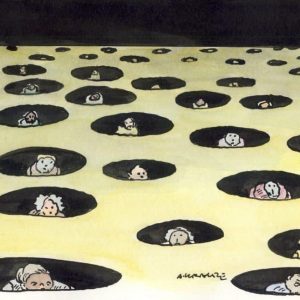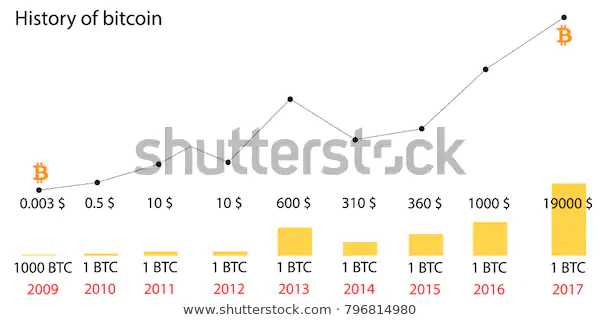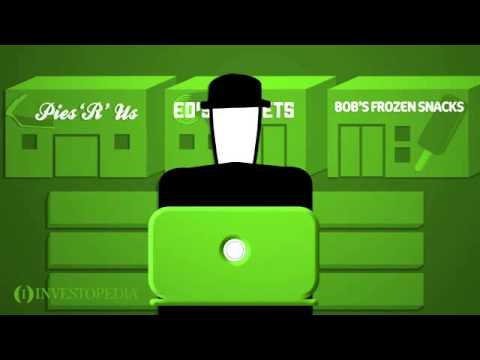

The two expressions of an equation are called the sides of the equation. Equations are used to calculate the value of an unknown variable. An equation specifies the relationship between the dependent and independent variables. Explains the relationship between two or more economic variables. A simple technical term is used to analyze and symbolizes a relationship between variables. It indicates how the value of dependent variable depends on the value of independent or other variables.
What is the scope of microeconomics is?
Microeconomics studies the decisions of individuals and firms to allocate resources of production, exchange, and consumption. Microeconomics deals with prices and production in single markets and the interaction between different markets but leaves the study of economy-wide aggregates to macroeconomics.
Like any other science, it has its own scientific laws and theories which can be measured and verified and proved. IIM Kozhikode courses is beneficial for professionals who are looking to gain the skills necessary to pursue higher-level positions in their respective fields. This programme will help professionals gain the knowledge and skills necessary to excel in their respective roles.
Test: Nature And Scope Of Business- 2
Micro economics is mainly confined to price theory and resource allocation. This approach does not study national economic problems such as unemployment, poverty, inequality of income, etc. Theory of growth, the theory of business cycles, monetary and fiscal policies, etc. are beyond the limits of micro economics. Ignore the wholeIt ignores the whole economy and studies only the small parts of the economy.
This relates to the study of income distribution and how it affects the common good. Welfare economics is a subjective study that may assign units of welfare or utility in order to create models that measure the improvements to individuals based on their personal scales. Commodity pricingThe price of an individual commodity is determined by the market forces of demand and supply. Microeconomics is a branch of economics that studies the behavior of individuals and firms in making decisions regarding the allocation of scarce resources and the interactions among these individuals and firms.

For instance, Warren Buffet said macroeconomic forecasts never influenced his investment choices. Microeconomics is a branch of economics that studies the behavior of individual consumers and businesses in making decisions on allocating limited resources. It focuses on how these individuals and businesses interact with one another in the marketplace and how prices and quantities of goods and services are determined.
The change in quantity of goods sold upon changes in prices is defined as price elasticity. There are many factors which determine the elasticity of a good, a major factor being the number of substitutes/alternatives available in the market. Communism does not allow any kind of private property and supposedly everyone has an equal share in the output of society. It is almost antithetical to capitalism, and any semblance to faith in the base idea of ‘self-interest’ is thrown out the window. Pure communism is largely ideal and has failed to deliver so far in most of the cases, as we discover that people do respond to personal incentives in the end.
Microeconomics and macroeconomics: Differences you need to know
Some examples of microeconomics include supply, demand, competition, and the prices of items. Microeconomics is the science of how people make decisions at the small scale. It is different from macroeconomics which looks at how the economy works as a whole (“on aggregate”). Some parts of microeconomics include Consumer Theory and Theory of the Firm, which study how people and businesses make decisions. In different words, microeconomics tries to understand human selections, choices, and the allocation of sources. Microeconomics focuses on issues that affect people and corporations.
Individual income analysis is separate from national income analysis, individual demand analysis is separate from aggregate demand analysis, and so on. Welfare economics uses the perspective and techniques of microeconomics, but they can be aggregated to make macroeconomic conclusions. Because different „optimal“ states may exist in an economy in terms of the allocation of resources, welfare economics seeks the state that will create the highest overall level of social welfare. The study of consumption behaviour plays a central role in both macroeconomics and microeconomics. Macroeconomists are interested in aggregate consumption for two distinct reasons. First, aggregate consumption determines aggregate saving, because saving is defined as the portion of income that is not consumed.
What are the scope and limitations of microeconomics?
Micro-economic theories show under what conditions these efficiencies are achieved. Thus, we can conclude that the scope of Micro-economics is limited to price theory (factor pricing and product pricing) and allocation of resources. It does not study the aggregates relating to the whole economy.
In microeconomics, it applies to price and output determination for a market with good competition, which incorporates the situation of no consumers or sellers massive enough to have value-setting energy. Microeconomics is the social science that research the implications of incentives and decisions, specifically about how those have an effect on the utilization and distribution of resources. Generally talking, microeconomics provides a more complete and detailed understanding than macroeconomics. Microeconomics looks at how individuals and businesses make decisions, while macroeconomics focuses on the larger economic picture. By understanding both micro and macroeconomics, individuals can better understand how the overall economy works and how their decisions fit into the larger picture. Microeconomics and macroeconomics are interdependent on each other because they are both important to understanding the overall economy.
The study of these fiscal and monetary measures to bring down inflation makes the subject of economics as an art. Cost analysisMicroeconomic theories explain various conditions of cost like fixed cost, variable cost, average cost, and marginal cost. Optimum utilization of resourcesThe study of microeconomics helps the decision makers to analyze and determine how the productive resources are allocated for various goods and services. It also helps in solving the producers9 dilemma of what to produce, how much to produce and for whom to produce.
Microeconomics explores issues such as how households reach decisions about what to buy and how a lot to avoid wasting. It additionally affects how firms, such as Nike, determine what number of shoes to make and at what value to promote, in addition to how competitive different industries are and how that impacts shoppers. D) Even the Classical Economic theories of Prof. Adam Smith, Prof. Ricardo and Prof. J. S. Mill discussed the determination of national income and wealth. Economic problems such as inflation, deflation, balance of payments, poverty, unemployment, population, economic growth etc. Macro economics helps to analyze the causes of fluctuations in income, output, and employment and makes an attempt to control them or reduce their severity. Macro economic analysis gives us an idea of the functioning of an economic system.
What is the difference between macroeconomics and microeconomics?
Factor pricing theoryMicroeconomics helps in determining the factor prices for land, labor, capital, and entrepreneurship in the form of rent, wage, interest, and profit respectively. Land, labor, capital, and entrepreneurship are the factors that contribute to the production process. INTRODUCTIONMicroeconomics is the branch of economics that considers the behaviour of decision takers within the economy, such as individuals, households and firms. The word 8firm9 is used generically to refer to all types of business. Microeconomics contrasts with the study of macroeconomics, which considers the economy as a whole. A major part of business decision making depends on accurate estimates of demand.
A fall in the price of one commodity would cause an increase in the demand of the complementary commodity. For example, other factors being constant, fall in prices of sugar would increase the demand for tea and vice versa. Both the consumers‘ and firms‘ objectives are compatible in the market equilibrium. 1.Perfect CompetitionIn a perfect competition type of market structure, there is a large number of buyers and sellers, where each of them is competing against the other. Economics is the study of the production, distribution, and consumption of goods and services in a given society. This can diverge from the Utilitarian goal of maximizing utility as a result of it does not think about the distribution of products between folks.
- Macro economics consists of the theory of economic growth and development.
- In contrast, macroeconomics looks at how the overall economy is affected by the decisions of governments and their policies.
- A higher minimum wage might potentially require Wendy’s Company to recruit fewer workers, according to microeconomics.
- The difference between microeconomics and macroeconomics lies in the scope of their studies.
- It is different from macroeconomics which looks at how the economy works as a whole (“on aggregate”).
Microeconomics is the study of how people make decisions, what influences those decisions, and how those decisions affect the products markets by changing pricing, supply, and demand. Economics is considered as a science because it is a systematic knowledge derived from observation, study and experimentation. But laws of economics are less perfect as compared with the laws of pure sciences. An art is the practical application of knowledge for achieving definite ends. Science provides knowledge about a phenomenon and an art teaches us to do a thing. The government takes certain fiscal and monetary measures to bring down the general level of prices in the country.
FAQs on Maharashtra Board Class 12 Solutions for Economics Chapter 1 Introduction to Micro and Macro Economics
While macroeconomics examines the entire economy and its relationships with other economies, microeconomics concentrates on smaller economic entities like individual homes and businesses. Prices and quantities have been described as probably the most instantly observable attributes of goods produced and exchanged in a market economic system. The theory of provide and demand is an organizing principle for explaining how prices coordinate the amounts produced and consumed.

Equilibrium is the state of being in a state of balance between two factors. The microeconomic analysis is concerned with partial equilibrium, which investigates the equilibrium position of a single economic unit, such as a single client, a single firm, or an industry. It isolates a single unit from other forces and investigates its equilibrium on its own. In macro economics analysis, aggregates are considered as homogeneous but do not look into its internal composition. For example, if the wages of the non teaching staff of university falls and the wages of the teaching staff rise,the average wage may remain the same.
In order to test the economic principles, method makes statistical techniques. Just to patronize their own products, while the fifth is a fool. From this observation, we can easily draw conclusions that people like to buy from a cheaper shop unless they are guided by patriotism or they are devoid of commonsense. In this method, data is collected about a certain economic phenomenon. These are systematically arranged and the general conclusions are drawn from them. It require; a great deal of care to avoid bad logic or faulty economic reasoning.
Does microeconomics have limited scope?
The scope of micro economics is limited to only individual units. It doesn't deal with nationwide economic problems such as inflation, deflation, the balance of payments, poverty, unemployment, population, etc.
Man is always busy in adjusting his limited resources for the satisfaction of unlimited ends. The problems that centre round such activities constitute the subject-matters of economics. There being limited scope of experimentation, the method helps in deriving economic theories. The use of mathematical techniques in deducing theories of economics brings exactness and clarity in economic analysis.
The products are similar but all sellers sell differentiated products. Gini coefficientIt represents the income distribution of a country’s residents. It was developed the scope of microeconomics is limited by the Italian statistician and sociologist Corrado Gini. A commodity Glut is an excessive quantity i.e. oversupply a glut of the commodity on the market.
Is the scope of macroeconomics limited?
The scope and subject matter of macroeconomics is wide. This is because it covers multi-dimensional aspects of the economy such as employment, national income, population, etc. So it is wide in the range of topics. Also, it is widely used in terms of practical application as well like, formulation of policies, etc.

Neueste Kommentare